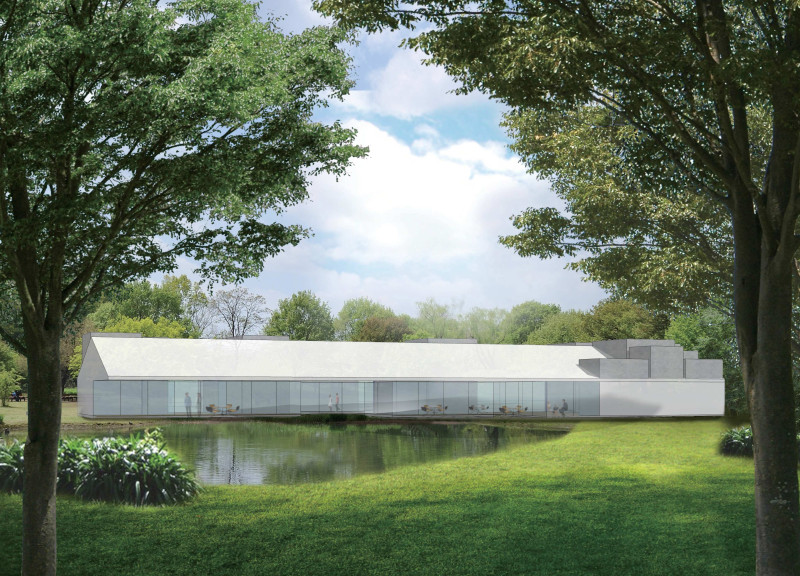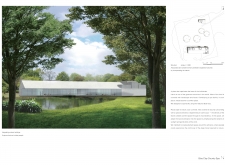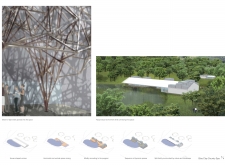5 key facts about this project
## Overview
The design of the Blue Clay Country Spa is situated in Latvia's lush landscapes, aiming to harmonize contemporary architecture with the natural environment. By thoughtfully organizing spaces and selecting appropriate materials, the facility promotes a tranquil atmosphere conducive to relaxation and wellness. Key elements of the project include distinct areas for private retreat and communal engagement, all strategically positioned to enhance the connection to the surrounding landscape.
## Site Organization and User Interaction
The site plan emphasizes a deliberate arrangement of functional areas that cater to user experience while maximizing the benefits of the natural environment. The guest house, designed to provide privacy, incorporates separate zones for relaxation and social interaction, following the land's natural contours. The spa facilities include therapy rooms, a relaxation area, and a pool that visually extends toward a nearby pond, reinforcing the calming effects common to spa designs. A children's playground is distanced from quieter spaces, ensuring adults can enjoy a serene environment. An efficiently positioned service area maintains ease of access for personnel while prioritizing privacy for guests.
## Material Selection and Design Dynamics
Materials play a pivotal role in the design's aesthetic and functional characteristics. Reinforced concrete offers structural support, while double-laminated glass facades invite abundant natural light and views of the landscape. The use of blue clay plaster not only reflects local identity but also adds texture and warmth to interior spaces. Wood serves as a primary structural element, echoing organic forms found in the surrounding forest.
Moreover, the architectural form demonstrates a fluid house-shaped volume that mirrors the landscape’s undulations. Opportunistic skylights and expansive folding glass doors manipulate light density, creating variable ambiance tailored to each space’s function. Seasonal adaptability is achieved through deliberate design choices—such as facade angles and shading devices—that enhance comfort and connectivity to the outdoors throughout the year.






















































